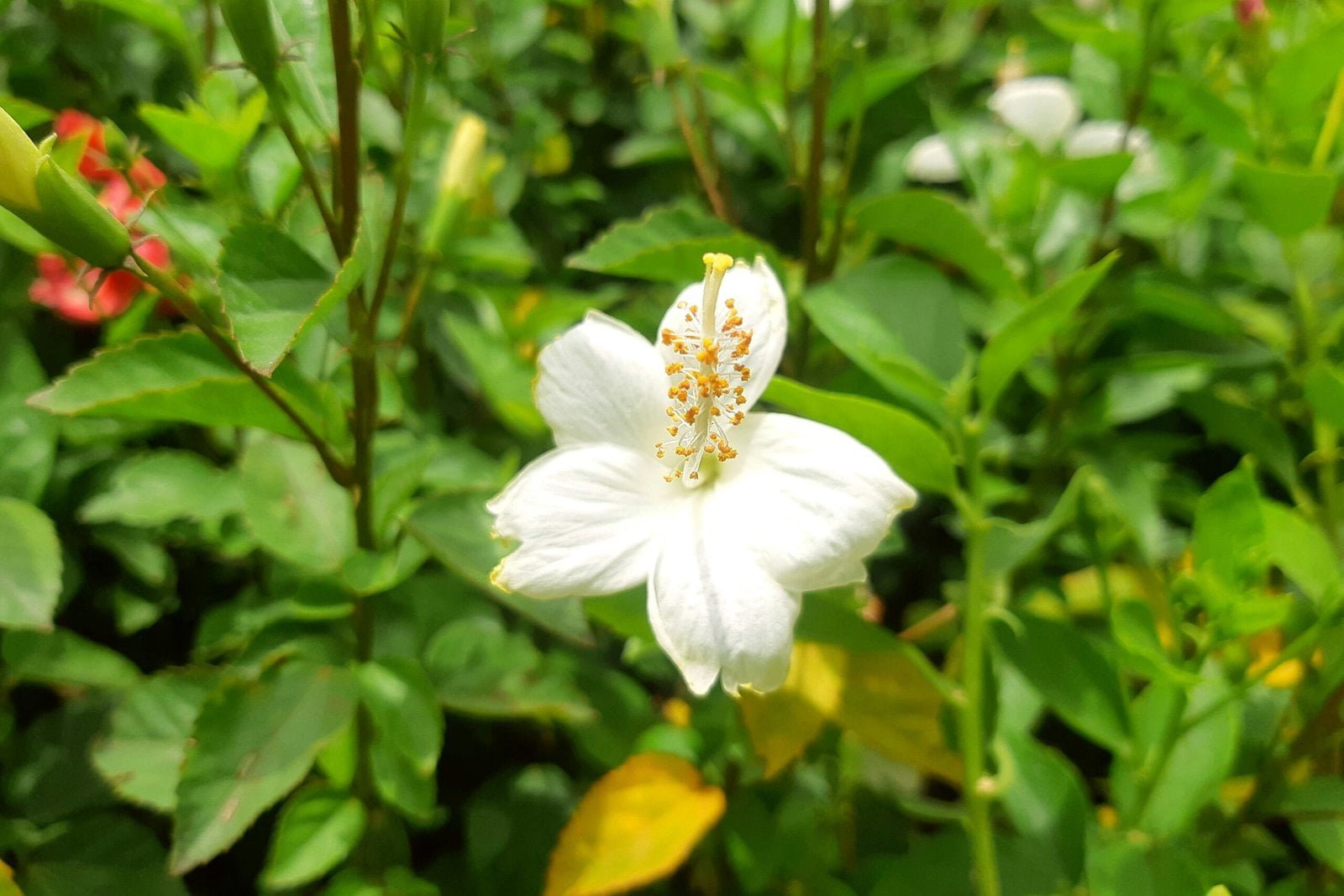Discover the beauty and practicality of ornamental shrubs in landscape design. Learn how these versatile plants can provide continuous blooms throughout the summer, support local ecosystems, and serve as natural privacy screens. Explore top shrub varieties like Hydrangea, Butterfly Bush, Rose of Sharon, and Summer Lilac, and get essential care and maintenance tips to keep your garden vibrant and thriving.
Introduction to Ornamental Shrubs
Ornamental shrubs play a pivotal role in landscape design, offering both aesthetic appeal and practical benefits. These versatile plants can transform garden spaces by providing an array of colors, structures, and textures that enhance the overall visual interest. Whether used as borders, hedges, or standalone focal points, ornamental shrubs contribute significantly to the allure of any garden.

One of the most compelling features of ornamental shrubs is their ability to bloom throughout the summer, ensuring a continuous display of floral splendor. This extended blooming period not only adds consistent beauty to garden spaces but also supports local ecosystems by attracting pollinators like bees and butterflies. The vibrant flowers and lush foliage of these shrubs create dynamic landscapes that evolve with the seasons.
Please, read our post and do not forget to check our YouTube channel “Grig Stamate”:
https://www.youtube.com/@GrigStamate
You will find there, thousands of designing, furnishing, and decorating ideas for your home interior and outdoors.
Allow me to mention one of them:
Beautiful Gardens and Flower Gardens | OUTDOOR DECOR & LANDSCAPING IDEAS #12 (video)
Moreover, ornamental shrubs offer a range of practical benefits that go beyond their visual appeal. They can serve as natural privacy screens, windbreaks, and noise barriers, enhancing the functionality of outdoor spaces. Additionally, their varied heights, shapes, and colors allow gardeners to experiment with different design elements, creating intricate patterns and layers within the garden.
In different garden settings, ornamental shrubs can be tailored to meet specific needs. For instance, in formal gardens, they can be pruned into neat, defined shapes to create a sophisticated look. In contrast, in more naturalistic or cottage gardens, they can be allowed to grow freely, adding a touch of wild beauty. The adaptability of these shrubs makes them suitable for a wide range of garden styles and environments.
Ultimately, ornamental shrubs are invaluable assets in landscape design, providing both beauty and utility. Their ability to offer continuous blooms throughout the summer ensures that gardens remain vibrant and captivating for extended periods. As we delve deeper into the world of ornamental shrubs, we will explore specific varieties that exemplify these qualities, showcasing their unique contributions to garden aesthetics and functionality.
Top Ornamental Shrubs for Summer-Long Blooms
Ornamental shrubs are a wonderful addition to any garden, providing a vibrant display of colors throughout the summer months. Here, we highlight some of the top choices that are known for their long-lasting blooms, striking flower colors, and unique characteristics.
Hydrangea (Hydrangea macrophylla): Known for its large, mophead or lacecap flower clusters, Hydrangea offers a stunning array of colors ranging from blue, pink, white, to purple. Blooming typically starts in late spring and continues through summer. These shrubs thrive in well-drained, fertile soil with partial to full sun exposure. Hydrangeas appreciate consistent moisture, making regular watering essential during dry spells. Their ability to change flower color based on soil pH makes them a fascinating addition to the garden.
Butterfly Bush (Buddleia davidii): Aptly named, the Butterfly Bush is a magnet for butterflies and other pollinators. This shrub blooms from mid-summer to early fall, showcasing long, cone-shaped clusters of purple, pink, white, or yellow flowers. Preferring full sun, the Butterfly Bush grows best in well-drained soil and is quite drought-tolerant once established. Its rapid growth and ability to attract beneficial insects make it a standout in any summer garden.
Rose of Sharon (Hibiscus syriacus): Rose of Sharon is a hardy, deciduous shrub that produces an abundance of large, hibiscus-like flowers in shades of white, pink, lavender, and blue. Its blooming period extends from late summer to fall. This shrub prefers full sun to partial shade and can adapt to various soil types, although it thrives in well-drained, slightly acidic soil. Rose of Sharon is notable for its tolerance to urban conditions, making it ideal for city gardens.
Summer Lilac (Syringa reticulata): Also known as the Japanese Tree Lilac, this shrub is celebrated for its creamy white, fragrant flowers that bloom in early to mid-summer. It grows well in full sun and well-drained soil, showing some drought resistance once established. Summer Lilac is particularly admired for its exfoliating bark and robust, tree-like form, adding architectural interest to the garden even beyond its flowering season.
Each of these ornamental shrubs offers unique attributes that can enhance the visual appeal of your garden all summer long. By selecting the right combination of blooms, you can ensure a continuous and captivating floral display throughout the warmer months.
Care and Maintenance Tips for Thriving Shrubs
To enjoy the continuous blooms of ornamental shrubs throughout the summer, it is crucial to provide them with proper care and maintenance. Start with correct planting techniques. Ensure the shrub is planted in well-draining soil, ideally in a location that receives at least six hours of sunlight daily. The planting hole should be twice as wide and just as deep as the root ball, allowing roots to spread comfortably. Incorporate organic matter into the soil to enhance fertility and structure.
Watering is another key aspect. Newly planted shrubs require consistent moisture, so water them deeply twice a week during their first growing season. Established shrubs typically need about an inch of water per week, either from rainfall or supplemental irrigation. Mulching around the base helps retain moisture and regulate soil temperature.
Fertilization should be approached with care. Use a balanced, slow-release fertilizer in early spring to support new growth. Avoid over-fertilizing, as excessive nutrients can promote lush foliage at the expense of blooms. Organic options, such as compost or well-rotted manure, can also be beneficial.
Pruning is essential to maintain the shape and health of ornamental shrubs. Remove dead or diseased branches promptly. For flowering shrubs, prune after the blooming period to encourage new growth and avoid cutting off next year’s flower buds. Regular pruning also improves air circulation within the plant, reducing the risk of fungal diseases.
Pest control is vital for maintaining the health and beauty of your shrubs. Monitor for common pests such as aphids, scale, and spider mites. Employ integrated pest management (IPM) strategies, which include mechanical removal, biological controls, and, if necessary, chemical treatments. Opt for organic or less toxic solutions whenever possible.
Maintaining soil health is foundational for thriving shrubs. Test your soil every few years to check pH levels and nutrient content. Amend the soil based on test results, ensuring it remains within the optimal range for your specific shrub species.
A seasonal care calendar can be particularly helpful:
- Spring: Fertilize, prune, and monitor for pests.
- Summer: Water regularly, mulch, and check for signs of disease.
- Fall: Apply organic matter, reduce watering, and prepare shrubs for winter.
- Winter: Protect against frost and heavy snow, if necessary.
By following these care and maintenance tips, gardeners can ensure their ornamental shrubs remain healthy and vibrant, providing floral splendor all summer long.
Design Ideas for Incorporating Shrubs into Your Garden
Integrating ornamental shrubs into your garden can bring dynamic visual appeal and lasting floral splendor throughout the summer months. Whether your garden is a quaint cottage retreat, a sleek modern landscape, or a classic English sanctuary, thoughtfully chosen shrubs can significantly enhance the overall aesthetic.
In a cottage garden, consider using flowering shrubs like hydrangeas and spireas. Their lush blooms and informal growth patterns contribute to the whimsical, romantic atmosphere. Pair these with perennials such as lavender or daisies to create a layered effect that bursts with color and texture. Additionally, consider planting climbing roses on trellises to offer vertical interest and a touch of vintage charm.
For a modern minimalist landscape, focus on shrubs with clean lines and structured forms. Boxwoods and Japanese maples are ideal choices, offering both formality and simplicity. Complement these with ornamental grasses and strategically placed stones to maintain the sleek aesthetic. Opt for shrubs with varied foliage colors, such as the deep burgundy of a Smoke Bush or the silvery leaves of an Olive Tree, to add subtle yet impactful contrast.
In a traditional English garden, classic choices like roses, lilacs, and peonies can be used to create an elegant and timeless look. These can be arranged in formal patterns or allowed to grow more freely for a slightly wild, natural feel. Companion plants such as foxgloves and delphiniums add height and interest, while low-growing herbs like thyme or chamomile can be used as ground cover.
Ornamental shrubs also serve practical purposes. They can act as focal points in your garden, drawing the eye to a specific area. Shrubs like the Butterfly Bush or Viburnum, with their showy flowers, are excellent for this purpose. They can also be utilized as privacy screens, forming natural barriers that provide seclusion. For this, consider dense, evergreen varieties like Holly or Laurel. Moreover, shrubs can enhance wildlife habitats, attracting birds, bees, and butterflies. Flowering shrubs such as Buddleia and Weigela are particularly effective in supporting local biodiversity.
By mixing and matching different types of ornamental shrubs and incorporating suitable companion plants, you can create a garden that is not only visually stunning but also healthy and thriving. Whether you’re aiming for a casual, formal, or avant-garde design, the right combination of shrubs will ensure that your garden remains a place of beauty and interest all summer long.
Other related posts from our website:
https://howtobuildahouseblog.com/should-i-deadhead-rhododendrons-weighing-the-pros-and-cons/
Thank you so much for your attention.
Stay tuned. We will upload many other amazing posts to our website and videos onto our YouTube channel.
Thank you so much.
for your time and attention.
Best Regards
See you to another post,
Bye, Bye



No Responses